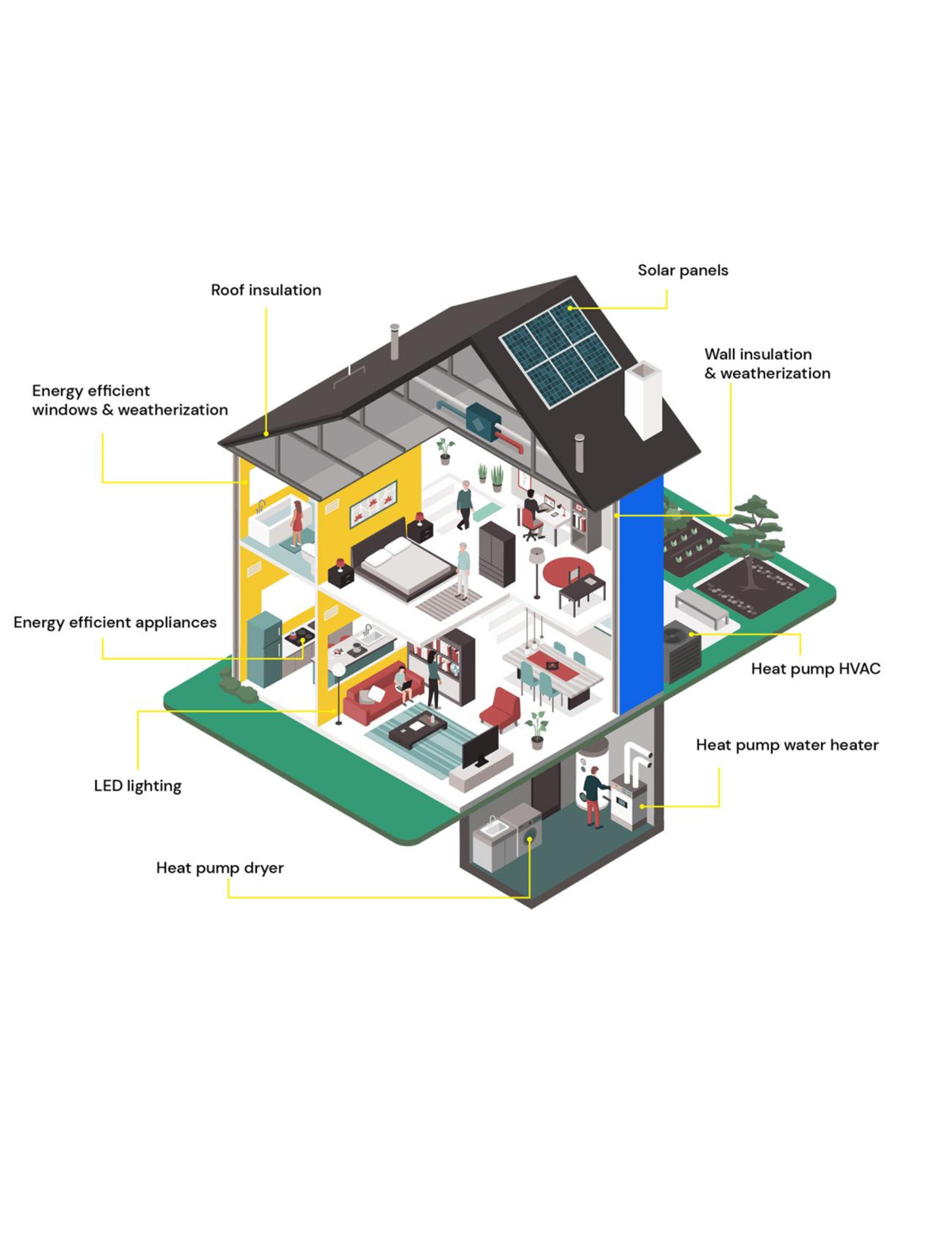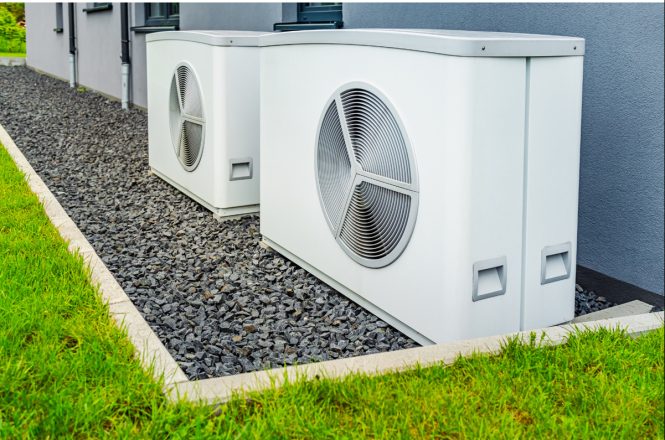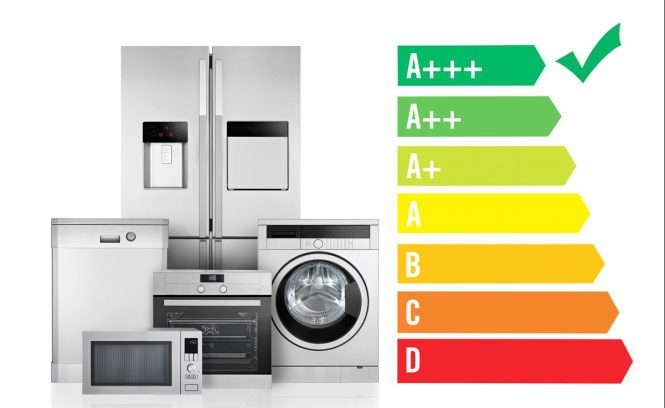Why Should I Electrify? (And What Do I Do First?)
By Melissa Everett | Winter 2023 | Clean Power Guide
“Why” is the Easy Part
The only way to stop generating climate pollution is to stop relying on combustion to heat, cool, and power our lives and help us get around. Both New York and the federal government are driving the infrastructure and policy changes that will make this doable and beneficial by greening the grid and supporting a comprehensive shift to electric power with financial incentives, technology development, training, and education. As Rewiring America, a leading policy organization, notes, “Burning gas in the home is akin to living with a smoker, and is a major factor in childhood asthma.”
Electrification means:
- Shifting from gas to electric transportation.
- Shifting from fossil-powered to renewable electricity.
- Shifting from oil, gas, or propane for home heating to an electric heat pump.
- Transitioning appliances, tools, and other gadgets to the most efficient electric version you can.
A massive undertaking in the big picture, going electric does not need to be daunting for consumers, partly because it does not need to happen all at once.
A Logical Sequence
In spite of the diversity of homes, there is a logical sequence in the transition to electric. The place to begin is with efficiency. That will lower your requirements for heating, cooling, and power, preventing oversizing and overspending.
Tom Konrad, an energy finance professional and energy coach with New Yorkers for Clean Power, suggests the following sequence as a way to prepare and take small steps, then lean into the bigger investments smartly.
- Inventory: List all the ways you use fossil fuels.
- Prioritize: Rank all fossil-fired equipment by expected remaining life, with the ones that need replacement first.
- Plan: Decide on the best replacements for the equipment at the top of the list.
- Prepare: Do any preparatory steps for the above replacements as soon as possible (insulation and air sealing for heat pumps, electrical upgrades (if needed) for heat pumps, heat pump water heaters, EV chargers, and induction stoves.
- Implement: Execute your plan as time and money allows, but before you have to do emergency repairs.
- Don’t waste opportunities: Insulate walls and stop air gaps if open during remodels, add insulation if replacing roof or siding, do all electrical upgrades at the same time. Add solar panels shortly after roof replacement.
Plenty of Choices
The home energy audit is a marvelous thing, especially if you prepare by noticing where there are drafts, potential maintenance needs, and old equipment. Make sure your service provider knows what the Building Performance Institute is (and is certified through their training programs). Ask whether they can include infra-red photos of your home, which gives you a dramatically clear visual of heat moving through your walls. This is best done in summer or winter when there is a contrast between indoor and outdoor temperature. Your energy pro may actually perform some simple services like sealing air leaks during the visit.
During your early planning phases, make sure your electric system is in shape for higher loads. Your breaker box should be able to carry 200 amps (compared to the 60-to-100-amp capacity in some older houses). Your wiring should accommodate 240 Volts if an induction stove, EV charger, heat pump, or heat pump water heater is in your future. Next time you are upgrading lighting or getting anything electrical fixed, talk with your electrician.

In terms of major investments, insulation and further air sealing are among the most certain to pay for themselves in a few years. Geothermal or air source heat pumps are another mid-sized investment that make a substantial difference in reducing your energy use because they are so efficient. (Geothermal has the highest efficiency overall, while air source heat pumps generally have lower up-front costs.) All these will affect your demand for electricity, so it’s useful to have them done before you look at solar, in order to size the solar array correctly.
Roof orientation doesn’t need to be due south with today’s panels. According to Peter Reynolds of North River Architecture, “Anything on the east-south-west spectrum can work, though you’ll probably need more panels if it’s east- or west-facing. The real site issue is big trees near the house, especially evergreens.” Alternatively, you can keep the trees and buy into a community solar project to get your power from the sun.
A simple alternative to owning solar panels yourself, a Power Purchase Agreement is a no-cost way to put panels on your roof and just pay for the power they generate. These contracts are typically for 20 years and can be at a fixed or escalating rate. Since Tesla bought Solar City, the behemoth owns panels on many people’s roofs. But small local companies can also provide this service.
There are over 70 models on the market. Ranges are expanding, prices are falling. But charging is lagging behind what’s needed. According to 2022 research by Hudson Valley Pattern for Progress, there are over 400 public chargers in our region, but 342 were “level 2”—providing around 25 miles of range for every hour of charging. This is changing, as banks of fast-charging stations appear in malls and downtowns as well as on the Thruway. But if your travel patterns are complex and your gas car is already efficient, you might want to watch the rollout of chargers for another year or two while planning for your next car to be an EV.
There’s Money, Honey
By planning and taking time to research, a person can also watch for deals. There are at least four places to look for financial incentives and bargains: the state, the feds, lenders, and contractors.
The New York State Energy Research and Development Authority (NYSERDA) offers generous incentives under multiyear programs that are fairly well established and consistent. The main ones are: Home Energy Efficiency, Clean Heat, and EV Drive Clean Rebate. Find out more at Nyserda.ny.gov.
Electric utilities also provide financial incentives for electricity conservation and renewables, with differences from provider to provider. These programs are more likely to change every couple of years or as pools of funds run out, so keep on top of them. As of late 2023:
Central Hudson offers rebates for heat pumps and heat pump water heaters plus incentives for cutting power use at peak times and breaks on EV charging at specified times later in the day.

Orange and Rockland offers rebates for heat pumps and heat pump water heaters, as well as incentives for “smart thermostat” adjustments that let the utility reduce power when the grid is overloaded.
Con Edison offers an array of programs for “smart usage,” geothermal as well as air source heat pumps, and cash incentives for EV charging at off-peak times.
The game-changer is the Inflation Reduction Act, with two kinds of incentives: tax credits (for those who pay taxes) effective starting in 2023; and direct rebates, which are known generally but won’t be operational until program designs are finalized in 2024. The fine points of eligibility are critical—what is a made-in-America EV and how do I know if I’m low to moderate income? Rewiring America (Rewiringamerica.org) is the national impartial go-to source.
